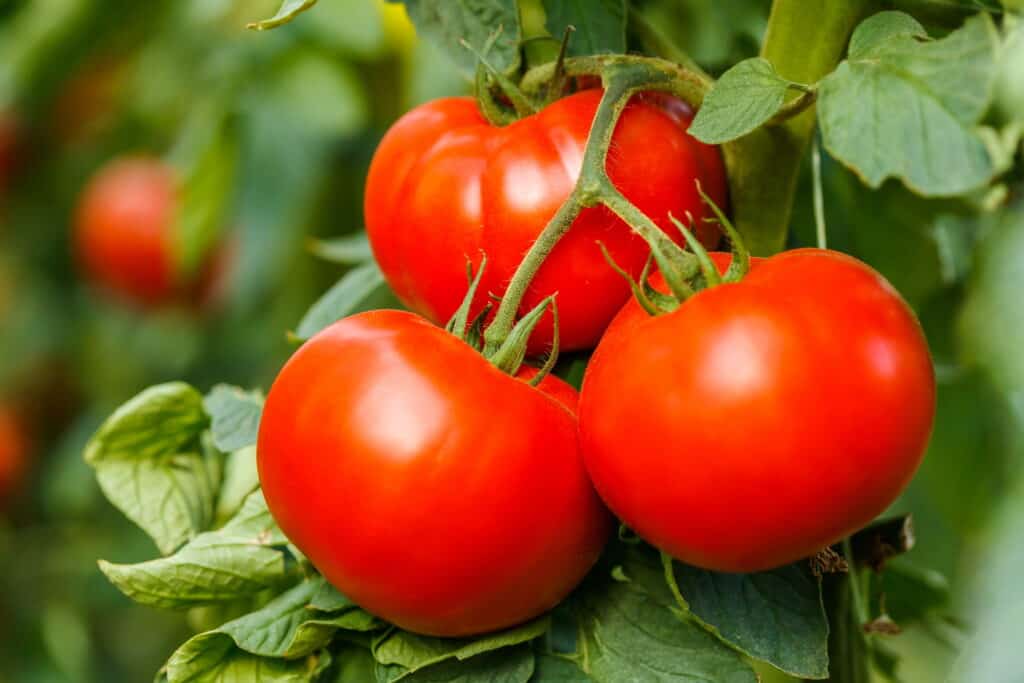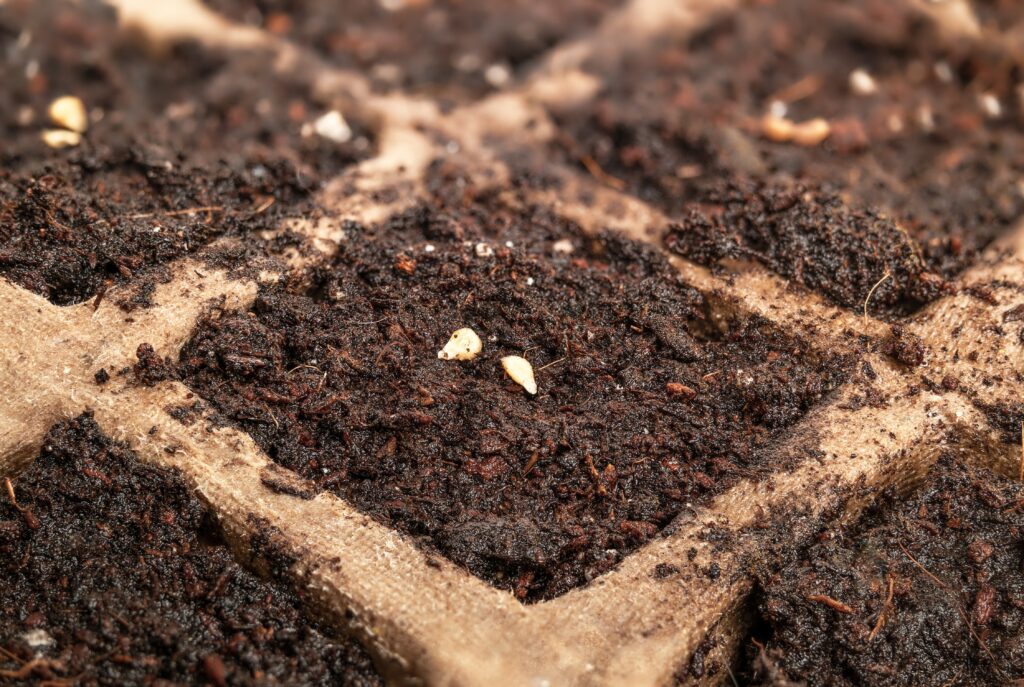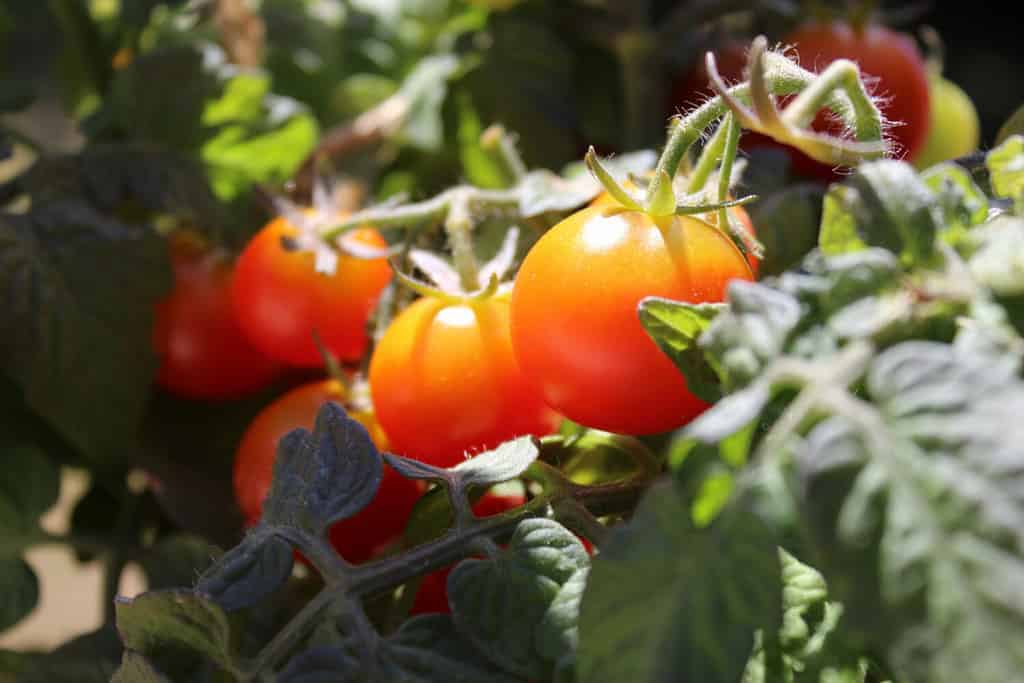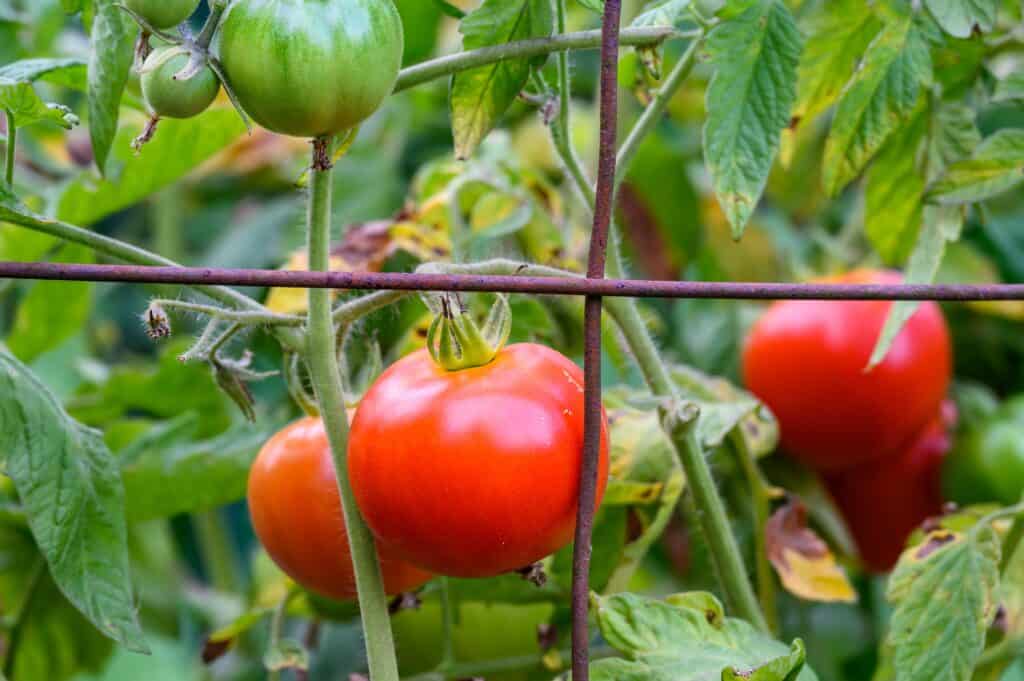Are you a gardening enthusiast in Ohio looking to grow some juicy tomatoes? Look no further! Our article “When to Plant Tomatoes in Ohio” provides essential tips and tricks for starting your tomato garden, including the best time to plant, soil preparation, and seedling care. With our expert advice, you’ll be harvesting delicious homegrown tomatoes all summer long. So grab your gardening gloves and get ready to dig in!
Ohio Gardening Zones

Growing tomatoes is a very tasty and rewarding activity.
©Szasz-Fabian Jozsef/Shutterstock.com
If you’re planning to start a garden in Ohio, it’s important to understand the different climate zones within the state. The United States Department of Agriculture (USDA) has classified Ohio into only two hardiness zones: Zone 5 and Zone 6. While most of the state falls under Zone 6, there are small pockets of Zone 5 scattered throughout.
Zone 6 covers much of central and southern Ohio, including cities such as Columbus and Cincinnati. This zone experiences an average minimum temperature range between -10°F to 0°F (-23°C to -18°C), making it suitable for growing plants that can tolerate colder temperatures.
On the other hand, Zone 5 is mostly concentrated in the center of the state, with additional areas found in northwestern and northeastern corners as well as along a small patch across its western border. This zone experiences an average minimum temperature range between -20°F to -10°F (-29°C to -23°C). It has a shorter growing season than zone six but still allows for certain fruits like apples and cherries or vegetables like potatoes or carrots.
Knowing which zone your area falls under will help you determine when it is best to plant certain crops based on their tolerance for cold weather conditions. Ultimately, understanding these differences will allow you greater success when gardening in Ohio!
When to Plant Tomatoes in Ohio

Cherry tomatoes grow very quickly in Ohio summers.
©YuRi Photolife/Shutterstock.com
If you’re a fan of growing your own tomatoes in Ohio, it’s important to remember that these plants are warm-season crops and therefore require specific planting conditions. To ensure the best chance of success with your tomato garden, it’s recommended to wait until after all danger of frost has passed before planting them. This means keeping an eye on weather patterns and waiting until temperatures have fully warmed up in your area.
However, if you’re feeling particularly eager to get started or simply can’t wait any longer to plant your tomatoes, there are ways to protect them in case of unexpected frost. Covering them with blankets or tarps is one option, as well as placing containers over the plants for added insulation.
When it comes specifically to Ohio, May 20 tends to be the date when it’s safe enough to start planting tomatoes without worrying about potential frosts damaging your crop. It’s wise not only to keep this date in mind but also regularly check local forecasts leading up to and during the growing season so that you can make any necessary adjustments or preparations accordingly.
Types of Tomatoes for Ohio

Even those with tiny gardens or balconies can grow small tomato varieties.
©AngieC333/Shutterstock.com
When it comes to selecting the right tomato variety for your garden in Ohio, there are a few key factors to consider. One of the most important considerations is size. Do you want larger tomatoes that can be sliced for sandwiches or smaller cherry varieties that are perfect for snacking? Another consideration is flavor. Are you looking for sweet, juicy tomatoes or more tart and acidic ones? Additionally, disease resistance should also be taken into account, as some tomato varieties may be more susceptible to common diseases like blight.
For those planting a garden in Ohio, there are several tomato varieties that have proven to be well-suited for this region. For larger slicing tomatoes with excellent flavor and texture, many gardeners recommend trying Beefsteak or Cherokee Purple varieties. On the other hand, if you’re looking for smaller cherry tomatoes with a burst of sweetness in every bite, Sungold or Sweet 100s might be great options.
Finally, if disease resistance is a top priority when selecting your tomato plants, keep an eye out for specific varieties such as Celebrity or Juliet, which have been bred to resist common diseases like early blight and verticillium wilt. With so many great options available, selecting the right type of tomato plant can make all the difference in ensuring a bountiful harvest from your Ohio garden.
How to Plant Tomatoes in Ohio

Plant cherry tomato seeds in individual pots.
©sophiecat/Shutterstock.com
If you want to grow healthy and productive tomato plants in Ohio, it’s important to start with properly prepared soil. One of the first steps is to test the pH level of your soil using a home testing kit or by sending a sample to a local agricultural extension office for analysis. Tomatoes thrive in slightly acidic soils with a pH range between 6.0-7.0.
Once you know your soil’s pH level, adjust it as necessary by adding lime or sulfur according to package instructions until you reach the desired range for tomatoes. Additionally, incorporate plenty of compost and other organic matter into the topsoil before planting your tomatoes. This will help improve soil structure, fertility, and water-holding capacity.
Good drainage is also crucial for growing healthy tomato plants since they don’t like sitting with wet feet for too long. To ensure proper drainage, consider adding some sand or perlite to heavy clay soils that tend to hold onto moisture.
When it comes time to plant your tomatoes, dig holes deep enough so that only about two-thirds of the stem is above ground while keeping at least 2 feet apart from each other if planting indeterminate varieties (vine-like). If planting determinate varieties (bush-like), space them closer together around 1 foot apart but no less than 18 inches apart from each other.
After placing each plant in its hole and gently backfilling with amended soil mixtures, support them by providing stakes or cages as soon as possible after transplanting.
How to Care For Tomatoes in Ohio

Tomatoes require consistent moisture and fertilizer.
©enterdisplaynamehere/Shutterstock.com
Tomato plants in Ohio require consistent care throughout the growing season to ensure healthy growth, high yields, and disease resistance. One of the most important aspects of caring for tomato plants is watering them correctly. Tomatoes need a regular supply of water to thrive, but overwatering can lead to root rot and other diseases. It’s best to water deeply once or twice a week rather than giving them frequent shallow watering.
Fertilizing tomato plants is also essential for proper growth and production. A balanced fertilizer with equal amounts of nitrogen, phosphorus, and potassium should be used throughout the growing season. However, too much nitrogen can lead to excessive foliage growth at the expense of fruit development. When the first fruits start to form, switch to a 5-10-5 fertilizer until harvest.
Pruning tomato plants is another critical aspect of their care during the growing season. Removing suckers (side shoots that grow between branches) helps focus plant energy on producing fruit instead of excess foliage. Pruning also improves air circulation around the plant canopy, which reduces disease incidence.
In addition to these three essential elements – watering, fertilizing, pruning – there are several other things you can do to help your tomato plants thrive in Ohio’s climate:
- Mulching: Applying mulch around your tomatoes helps retain moisture in the soil while suppressing weeds.
- Staking: Tomato cages or stakes support heavy fruit-laden branches from breaking off under their weight.
- Pest control: Keep an eye out for insect pests like aphids or stinkbugs that feed on leaves or fruits; use organic pest control methods as needed.
How to Protect Tomatoes in Ohio

You can keep slugs out of your garden by using copper strips.
©Art_Pictures/Shutterstock.com
Growing tomatoes in Ohio can be a rewarding experience, but it also comes with its own set of challenges. Pests and diseases are common threats to tomato plants in this region, so it is important to take the necessary precautions to protect your crops.
One effective way to prevent pest infestations is by using natural insecticides or repellents. These can include neem oil, garlic spray, or even planting companion plants such as marigolds and basil which naturally repel insects.
Diseases such as blight and wilt can also be detrimental to tomato plants in Ohio. To prevent these issues from occurring, rotate your crops each year and avoid planting tomatoes in the same spot for consecutive years. Additionally, ensure that your soil has proper drainage and avoid overhead watering, which can spread diseases.
Extreme weather conditions such as heat waves or heavy rainfall can also pose a threat to tomato plants in Ohio. To mitigate these risks, consider using shade cloth during hot summer months or covering your plants during periods of heavy rain.
Overall, taking proactive measures to protect your tomato plants from pests, diseases, and extreme weather conditions will help ensure a successful harvest season in Ohio’s challenging climate.
Tips For Maximum Tomato Yield

Tomato plants need to be staked or planted in tomato cages for support.
©knelson20/Shutterstock.com
One way to improve tomato growth and productivity is by using the right staking and pruning techniques. Staking helps keep the plants upright, prevents them from breaking under the weight of fruit, and creates more space for air circulation, which reduces diseases. Pruning also encourages healthy plant development by removing dead or diseased leaves, shoots, and branches that can drain energy from the plant.
To stake your tomatoes properly, start by placing stakes at least 6 feet apart in rows where you plan on planting your seedlings. As your tomato plants grow taller, tie them loosely to their stakes with twine or strips of cloth every few inches until they reach their full height. When pruning your tomato plants focus on removing any suckers that form in the crotch between two stems, as these will not produce fruit but instead divert energy away from productive parts of the plant.
By following these tips, you’ll be able to maximize tomato growth and ensure high yields come harvest time!
Summary of When to Plant Tomatoes in Ohio: 14 Tips for Your Garden
| Number | Tip |
|---|---|
| 1 | Ohio is in USDA Hardiness Zones 5 and 6 |
| 2 | Plant tomatoes on or after May 20th in Ohio |
| 3 | Recommended types are: Beefsteak, Cherokee Purple, Sungold, Sweet 100s, Celebrity, and Juliet |
| 4 | Soil pH between 6.0 and 7.0 |
| 5 | Good drainage is recommended. Add compost, perlite, or sand to clay soils |
| 6 | Plant with two-thirds of the stem above ground |
| 7 | Plant 18 to 24 inches apart |
| 8 | Water 1 or 2 times per week deeply and regularly |
| 9 | Fertilize with a 5-10-5 fertilizer as soon as the fruit begins to form |
| 10 | Prune to remove suckers |
| 11 | Stake for support |
| 12 | Inspect for insects and use natural insecticides |
| 13 | Mulch to conserve moisture and prevent splashing that causes bacterial disease |
| 14 | Use shade cloth or row covers in extreme weather |
Thank you for reading! Have some feedback for us? Contact the AZ Animals editorial team.








